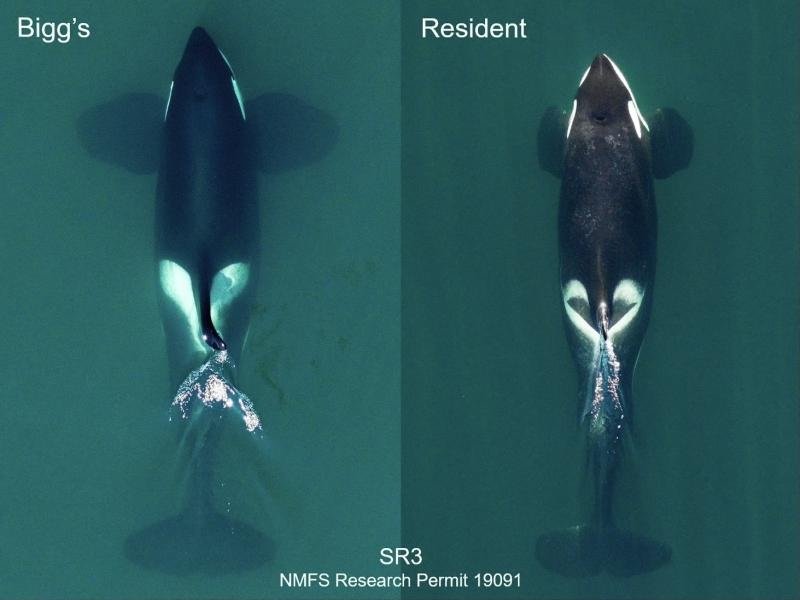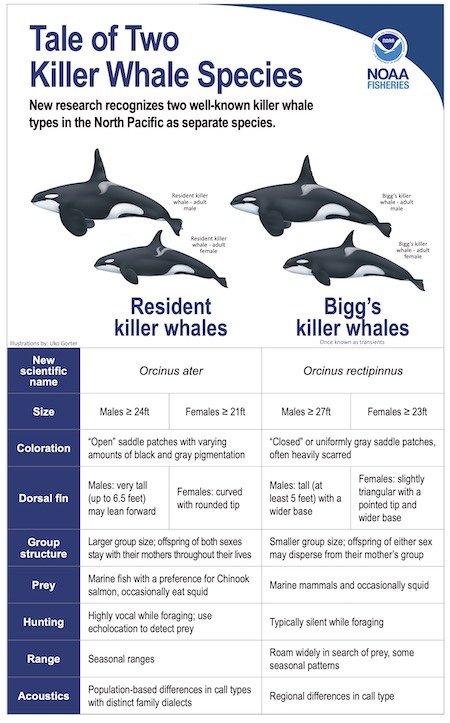Have Scientists Discovered a New Orca Species?
Orcas (Orcinus orca), also called killer whales, are the largest members of the dolphin family. These apex predators live in all of Earth’s ocean basins. They hunt fish and marine mammals, and they occasionally also prey on sharks. They’re truly the ocean’s top dogs. There are several known orca ecotypes, but a new paper argues two ecotypes are actually two distinct orca species.
Orcas are so widespread across the globe, it’s no surprise that some of them prefer slightly different habitats and prey items and even exhibit slightly different behavior. Perhaps it’s also not a surprise that groups of orcas tend to look a little bit different from each other, too.
Commonly recognized orca ecotypes in the North Pacific Ocean, for instance, include resident, transient, and offshore orcas. NOAA says each ecotype differs in appearance, diet, habitat, genetics, and behavior.
A clear difference between resident orcas and transient or Bigg’s orcas, for instance, is their preferred prey. Resident orcas eat fish (particularly salmon), while transient orcas prefer marine mammals like seals and sea lions, in addition to squid.
Proposal for New Orca Species Recognition
Now, scientists suggest there’s enough evidence to revise the taxonomy and recognize resident and transient orcas as two distinct orca species. Morin et. al. write in a newly published research paper:
“Our review and new analyses indicate that species-level status is justified in both cases, and we conclude that eastern North Pacific Bigg’s killer whales should be recognized as Orcinus rectipinnus [. . .] and resident killer whales should be recognized as Orcinus ater.”

Notable differences between resident and transient/Bigg’s orcas, besides their dietary preferences, also include the shape of their dorsal fins and the shape of the white marking (“saddle patch”) behind their dorsal fin. Behavioral differences include group sizes, hunting/foraging methods, and even how much noise they make.
Interestingly, the two groups of orcas don’t tend to intermix, even though they live in relatively close geographic proximity and have an overlapping range. Even more importantly, the scientists say that the two groups’ DNA suggests they’re genetically distinct enough to warrant being two distinct species or subspecies.

So what’s next for this proposal? It’s headed to a committee that will vote on whether the taxonomy needs to be revised. Do you think there are multiple orca species?
Source: https://outdoors.com/have-scientists-discovered-a-new-orca-species/







